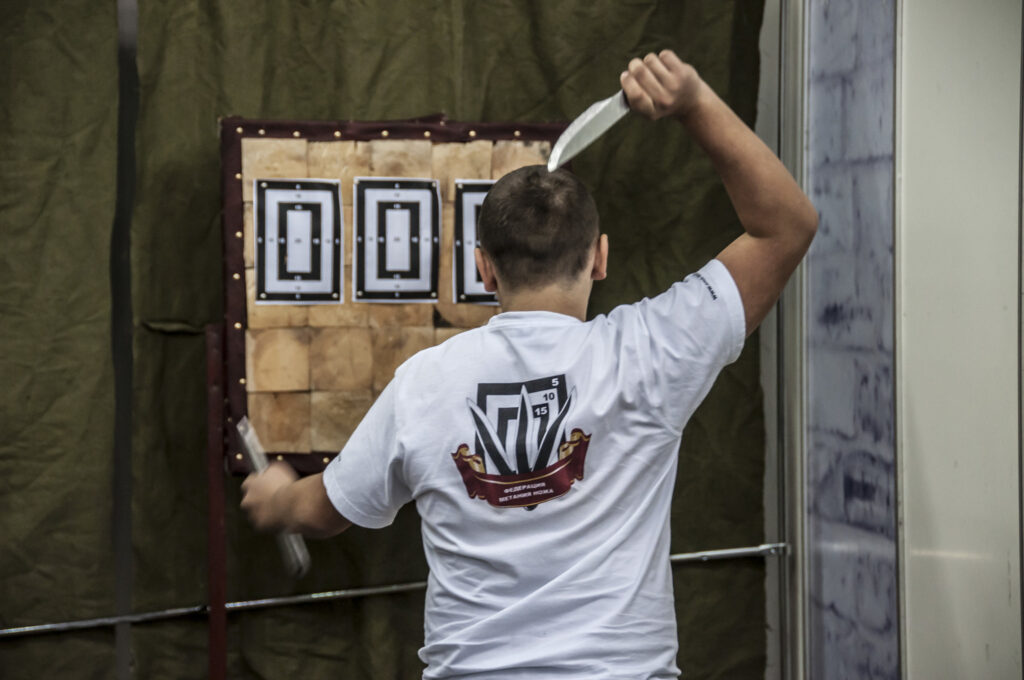Knife throwing is a skill that requires practice, patience, and precision. Whether you’re a beginner or have been throwing for a while, everyone makes mistakes along the way. The key to becoming a better thrower is recognizing those mistakes and correcting them to improve accuracy, consistency, and overall performance. In this article, we’ll explore some of the most common knife-throwing mistakes and provide tips on how to avoid them.
1. Using the Wrong Knife
One of the most common mistakes beginners make is using the wrong type of knife for throwing. Not all knives are designed for throwing and using a regular kitchen knife or pocket knife can lead to frustration and even injury. Throwing knives are specifically designed with balance, weight, and shape that make them ideal for flight and sticking into targets.
How to Avoid It: Invest in quality throwing knives that are balanced for rotation and have a suitable weight for your skill level. Start with knives that are well-known for their durability and balance, and as you gain experience, experiment with different styles to find what suits you best. If you’d like to figure out if you’re using the right kinds of knife to throw you can see our article on what is a throwing knife here.
2. Standing Too Close or Too Far from the Target
This may be the most frequent knife throwing mistake beginners will make. Another common issue is incorrect distance from the target. If you stand too close, the knife may not have enough time to complete a full rotation; too far away, and it may over-rotate. Finding the right throwing distance is crucial for achieving a consistent stick.
How to Avoid It: Start at a recommended beginner distance—usually around 8 to 10 feet from the target—and adjust your stance based on your throw. Observe how your knife is hitting the target; if it’s striking handle-first, you might be too far away. If it’s sticking in backward, you’re likely too close. Make small adjustments until you find the ideal range.

3. Poor Grip Technique
Many beginners use the wrong grip when throwing a knife, leading to inconsistency and lack of control. Gripping the knife too tightly can affect its trajectory, while holding it too loosely may result in a weak throw.
How to Avoid It: Use a grip that feels comfortable and allows the knife to leave your hand smoothly. The “pinch grip,” where you hold the blade between your thumb and first two fingers, is common for a rotational throw. Experiment with different grips to find what provides the best control for your throw style.
4. Focusing Too Much on Power Instead of Accuracy
It’s a common misconception that throwing a knife with force will make it stick better. In reality, accuracy and a smooth release are far more important than power. Overemphasizing power can throw off your balance and result in poor throws and due to the lack of control, can be dangerous.
How to Avoid It: Focus on developing a smooth, fluid motion rather than brute force. The knife should leave your hand naturally, without excessive effort. Remember, consistent technique and accuracy will give you better results than trying to throw with maximum force. For more safety tips on knife throwing check out our article here.
5. Incorrect Wrist Flick
A big knife throwing mistake beginners make is flicking their wrist when they release the knife. This wrist movement can cause the knife to spin unpredictably, making it difficult to control its rotation and landing.
How to Avoid It: Keep your wrist straight and avoid flicking it at the moment of release. Focus on using your shoulder and elbow to generate the throwing motion. A smooth, controlled release will help you achieve a consistent rotation and stick the knife into the target.
6. Not Paying Attention to Knife Balance
Not all throwing knives are created equal, and a common mistake is not understanding the balance of the knife you’re throwing. Some knives are “blade-heavy,” while others are “handle-heavy,” and they each require a different throwing technique.
How to Avoid It: Determine the balance point of your knife (the spot where it balances evenly on your finger) and adjust your throw accordingly. Blade-heavy knives are often thrown by holding the handle, while handle-heavy knives are gripped by the blade. Practice with different knives to understand how balance affects your throw.
7. Over-Rotating or Under-Rotating the Knife
Getting the knife to stick properly in the target often comes down to achieving the right rotation. Over-rotating or under-rotating is a common issue, especially when you’re still finding the right distance and technique.
How to Avoid It: Adjust your throwing distance and practice your release to find the correct rotation. If your knife is under-rotating (hitting handle-first), move back slightly or adjust your throw angle. If it’s over-rotating, step forward or change your grip to shorten the rotation.
8. Inconsistent Throwing Motion
Inconsistency in your throwing motion can lead to unpredictable results, even if you’ve found the right distance and grip. Many beginners fail to develop a consistent throw, leading to frustration when they can’t replicate their successful throws.
How to Avoid It: Focus on repeating the same motion each time you throw to avoid this. Pay attention to your stance, grip, arm movement, and release. Practicing with a partner or using video analysis can help you identify inconsistencies in your technique and make corrections.
9. Giving Up Too Quickly
Making some of the above knife throwing mistakes can be frustrating, especially when things aren’t going your way. It’s easy to give up after a few failed attempts, but persistence is key to mastering the art of throwing.
How to Avoid It: Patience is essential in knife throwing. Expect a learning curve, and don’t get discouraged by initial failures. Track your progress, celebrate small improvements, and focus on having fun with the process. The more you practice, the better you’ll become!
Final Thoughts on Knife Throwing Mistakes: Practice Makes Perfect
Knife throwing is as much about mindset as it is about technique. By understanding common mistakes and taking steps to avoid them, you’ll be well on your way to mastering the craft. Remember, every throw is an opportunity to learn, so approach each practice session with a focus on improvement and consistency. With time, patience, and a lot of practice, you’ll be sticking your throws with confidence!


